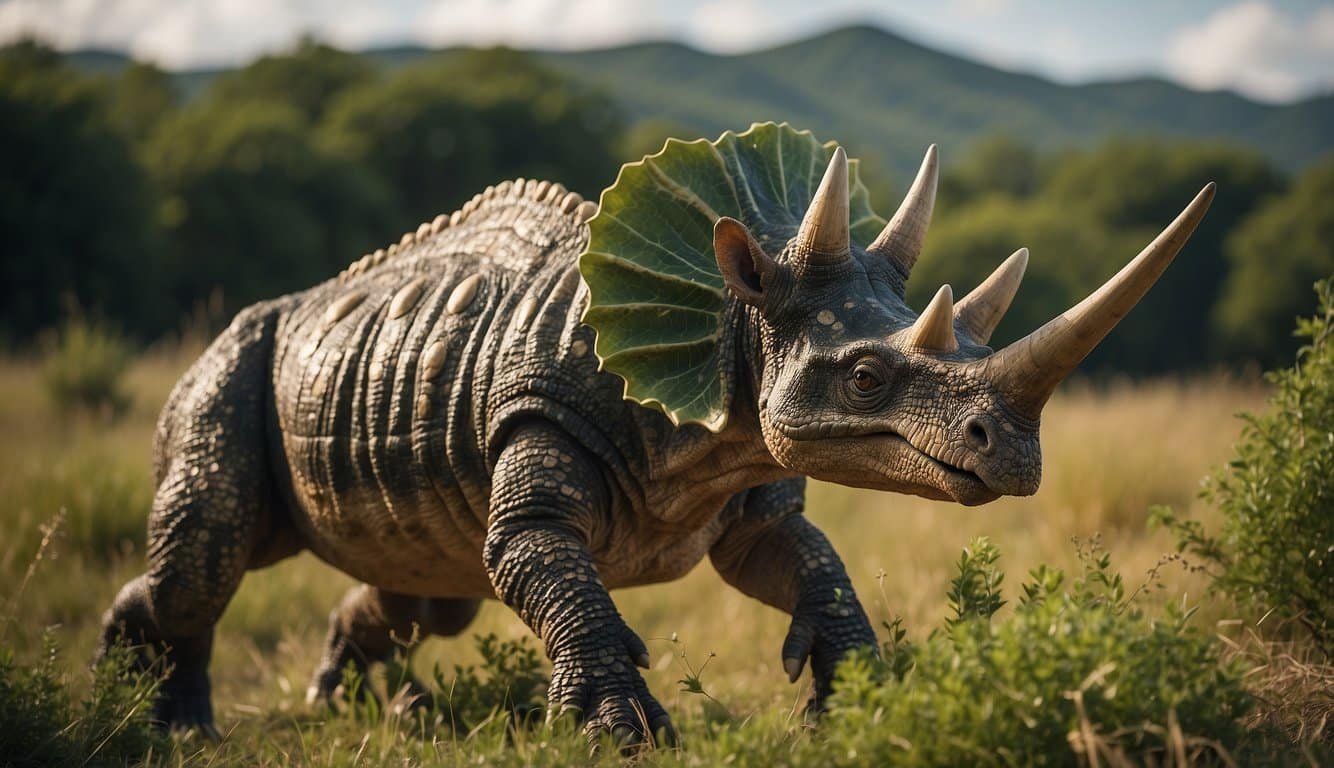Discovering Triceratops
When one thinks about the Cretaceous Period, the distinctive three-horned face of Triceratops often comes to mind. These majestic creatures once roamed the lands of Western North America, leaving behind fossils that tell a story spanning millions of years.
Historical Findings
The first recognized Triceratops fossils emerged in the late 19th century during an era characterized by intense fossil hunting and discovery. It was a time of great scientific rivalry, often exemplified by the infamous “Bone Wars” between paleontologists Othniel Charles Marsh and Edward Drinker Cope. Marsh’s contributions were particularly notable; in 1889, he introduced Triceratops horridus to the scientific community. Little-known fact: the species name “horridus” is Latin for “rough or rugged”, reflective of the fossil’s textured appearance.
Fossil Distribution
Triceratops remains have been found primarily in the Hell Creek Formation of Montana, though their fossils are distributed across varied sites in Western North America, including Colorado. Paleontologists from institutions such as Montana State University continue to uncover new specimens, adding to the understanding of these ceratopsians’ behaviors and environment. The Triceratops’ fossil distribution has contributed significantly to the field of paleontology, and it includes an intriguing discovery, formerly known as Nedoceratops, which some scientists believe could represent a transitional growth stage of Triceratops.
Anatomy and Evolution

Triceratops, a well-known herbivorous ceratopsian dinosaur, is distinguished by a unique combination of a three-horned face and a large bony frill. The evolutionary journey and anatomy of this prehistoric creature reveal much about its lifestyle and the environment in which it thrived.
Distinct Physical Features
Triceratops sported three imposing horns, two above the eyes and a smaller nasal horn, which may have been used for defense or sexual selection. Its large, bony frill, adorned with epoccipitals, could have served to protect the neck or as a display feature to impress other triceratops. The skull, featuring a strong beak and teeth arranged in columns, indicates a powerful bite capable of shredding tough vegetation.
Growth and Development
From juvenile to adult, Triceratops underwent significant changes. The smallest known Triceratops skull provides insight into the growth stages, suggesting that the horns and frill morphed as the dinosaur aged. Bonebed findings suggest that these dinosaurs may have traveled in groups, possibly indicating social behavior from young to maturity.
Species and Classification
Two main species are recognized within the genus: Triceratops horridus and Triceratops prorsus. Distinctions between species are typically based on variations in the shape and size of the horns and frill. The relationship between Triceratops and Torosaurus, another ceratopsian, has been the subject of much debate, with some suggesting that Torosaurus may represent a mature Triceratops. This underscores the dynamic diversity and complexity in the classification of these ancient creatures.
Behavior and Ecology
Triceratops, a well-known dinosaur from the Late Cretaceous period, intrigues scientists with its unique features and behaviors. Key insights into this plant-eating behemoth help us understand its diet, habitat, and how it fended off predators like the fierce Tyrannosaurus rex.

Diet and Habitation
Triceratops were herbivores, dining primarily on the lush vegetation of what is now North America. Their strong beaks and shearing teeth indicate they could tackle a variety of plants, including palms. These dinosaurs thrived in the rough terrain of the Badlands, alongside other non-avian dinosaurs, until the Cretaceous–Paleogene extinction event brought their era to an end.
- Habitat: North America’s Late Cretaceous landscape.
- Diet: Foliage such as palms and other available plant matter.
Social Behavior and Defense
When it comes to social behavior, evidence suggests Triceratops could have moved in herds, similar to modern-day bison, a behavior that would provide safety in numbers. Their large frills and formidable horns were likely used in combat, perhaps during courtship disputes or defending against predators. The iconic horns serve as a testament to their evolutionary arms race with predators, including the notorious T. rex.
- Defense: Horns and frills for protection and intraspecific combat.
- Social Structure: Potential herd behavior for enhanced survival chances.

